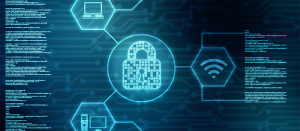The State of Cybersecurity
The internet has been around for decades. It has made so many aspects of life easier. Unfortunately, with all that extra convenience, people are giving up a lot of their personal and professional security.
Cyber attacks have increased enough to make headlines on an almost daily basis. Hackers are tapping into the wealth of insecurely protected data and reaping the rewards. Organizations are aware of these attacks and cybersecurity risks, but still don’t realize how much more dangerous hackers are becoming year after year. It seems easier than ever before for hackers to breach cybersecurity defenses. Not many organizations are taking the necessary steps to protect themselves, and their employee and user data.
Even though some companies are spending billions of dollars on security products and services, the number of data breaches is increasing. This is because most funding doesn’t go to properly designed security programs. The money is being spent on implementing security practices to protect against outdated adversaries and to continue to prop up password security.
Passwords are Hurting You
Passwords are ancient. They’ve been used for centuries as a way to protect people and information. In the early years of technology, they seemed like the best solution for controlling access to systems with sensitive data.
Over the years, passwords and password encryption methods have become more complex, but so have the skills of hackers. Passwords have accounted for 81 percent of data breaches in the past few years. Computers don’t know when a password has been compromised, it just grants access to whoever enters it. This lack of proof of identity is an obvious flaw in passwords today.
Not being able to prove identity with a password is one thing, but in addition, businesses can’t always monitor employees and users to make sure they are using best practices. Most people use the same or similar passwords for almost all accounts.
Don’t be Afraid of Multi Factor Authentication
It should be obvious that using multi factor authentication (MFA) helps with cybersecurity because it is a combination of three or more authentication factors: Something you know, something you have, and something you are (biometrics). Unfortunately, MFA still gets a bad rep. While most organizations utilize some form of traditional MFA or 2FA, it is universally hated because it’s a nuisance and frustrating to implement and use.
Is this bias toward convenience hurting companies? You bet! An analysis of recent breaches shows that if there had been additional authentication factors, the breaches probably wouldn’t have happened. There are a multitude of poorly designed MFA programs out there, so it’s no wonder that many companies don’t like utilizing them. With most MFA programs, you need to go through every step of the authentication process every time you need to sign in. This is absolutely a hassle, but it doesn’t have to be that way. In addition, many MFA solutions require you to create one-time passwords (OTP) or tokens every time you sign-in. This is annoying and time consuming for users. Thankfully, there is another way – using your biometrics as part of an MFA solution.
FREE WHITEPAPER: MFA WITHOUT TOKENS OR PASSWORDS
Leveraging Biometrics in MFA
To increase adoption of MFA solutions, all you need to do is implement a better MFA solution. One way to do that is by leveraging biometrics.
One of the major issues with passwords and tokens is that they can’t prove your identity. Biometrics solve that problem. Adding biometrics as an authentication factor is the best way to prove identity because your biometrics are you. Identity-based access control is a significant improvement over alternative authentication factors because you can’t forget it, you can’t lose it, and they are extremely difficult to steal and unique to you.
Biometrics are lightyears more secure than other authentication factors, and make accessing sensitive information and remote servers easy and effective. Especially when you utilize smartphones to deploy biometric authentication. It’s so easy and effective, people who complain about MFA being a nuisance won’t have anything to complain about anymore.
To make one final point, many consumers are concerned about protecting their biometrics. This is a valid concern, but if the biometrics are properly implemented it will actually enhance personal and professional privacy. Using techniques like visual cryptography and a distributed data model help make sure your biometrics and sensitive information will never end up in the wrong hands. This way you can use MFA solutions and still be able to sleep at night knowing your biometrics and your data are safe.





